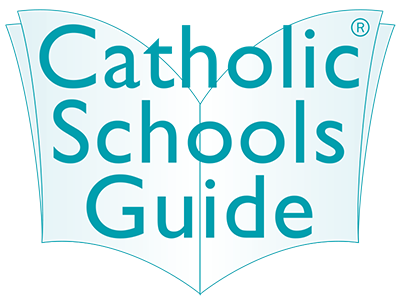News and Media

Environment and Sustainability in Catholic Schools by John Phelan
The school curriculum is a crowded place; as the world becomes more complex, so too the demands on school time. Educators need to make choices; to prioritise those areas of learning which are critical to the future of our community and nation.
They also need to model their own responses to important issues, to “lead from the front” in the way they deal with the challenges of our time.
In 2015, Pope Francis released his encyclical, Laudato Si’– on care for our common home, dealing with our relationships with nature, God and our fellow human beings.
But even before this, in 2012, the Catholic Education Council of the Archdiocese of Brisbane developed a Justice Education Policy that stated that we, as educators, are committed to creating learning communities that teach for, and witness to, justice, peace and ecological stewardship shaped by biblical understandings and Church social teaching.
A position statement – Creation We Care – was developed to help schools and office communities to implement this commitment – to ensure that staff and students understand the importance of environmental sustainability and implement this across the range of our activities.
There’s a biblical background to this – the Book of Genesis tell us that humans are stewards of God’s creation, charged with cultivating and caring for all creation (Genesis 2:15).
That’s a big responsibility.
Care for creation flows out of religious respect for the integrity of creation
and concern for the common good – past, present and future (Catechism of the Catholic Church n.2415).
So, it’s clear that we have a responsibility to look after the environment and to integrate
sustainable practices into our schools, whilst also educating our students about the importance of sustainability. How do we do that? It starts with school design. We make sure our buildings are designed to retain heat in winter, yet be airy in summer.
This is achieved through the physical design and orientation of buildings, roof heights and designs, and taking account of the climatic conditions of each location. We use innovative architects who understand the importance we place on these criteria.
Some of our schools have installed equipment which monitors energy usage to gain a better understanding of how and where power is used. We’re then able to make changes or take steps to change behaviours, to try to reduce usage.
Brisbane Catholic Education (BCE) is currently compiling an energy usage reduction program, working with Catholic Earthcare, architects, engineers and others as part of our response to the encyclical Laudato Si’.
This is a pilot program, involving eight schools initially, which involves educating school communities about the importance of sustainability and provides a practical program foreducing energy usage.
BCE is also investigating the use of geothermal installations for heatinand cooling and is seeking to trial this in two schools.
Many schools have implemented solar energy plans, recycling programs and installed large water tanks to reduce reliance on town water to keep our campuses and ovals green.
Schools have also developed their own School Environmental Management Plans, to guide their approaches to a wide range of sustainability practices.
St Stephen’s Primary School at Algester has gone one step further, and has developed an environmental education centre, called Sheepstation Gully. This innovative program, developed in partnership with the neighbouring state school, integrates environmental studies across the curriculum, and the building itself contains a range of monitoring devices that assist the students in their learning.
Such approaches are in line with curriculum requirements; indeed, the Australian Curriculum gives special consideration to cross-curricular priorities which are embedded acroslearning areas. Sustainability is one such priority.
Sustainability education is futures oriented, focusing on protecting the environment whilst using the resources God has given us to create a more ecologically and socially just world. It’s about meeting the needs of the present without compromising the ability of future generations to meet their needs too.
We seek to create a climate for change; to engage and enable the whole community; and to implement and sustain the transformation. It’s very practical in its application, teaching students the importance of:
- Saving energy by using passive heating and cooling technology and installing energy- efficient lighting and appliances
- Recycling waste materials where possible and not using unrecyclable products, such as plastic bags
- Using digital technologies in school and in communication with parents to reduce the use of paper
- Reducing litter by implementing sustainable procedures and products
- Purchasing reusable/recycled items
- Reusing packaging materials
- Introducing organics programs to manage organic waste on site
- Maximising the use of rainwater
- Planting native trees
- Working in partnership with the broader community on environmental projects.
In implementing this approach, Catholic schools are living a key component of the mission of the Church, as explained by Pope Benedict XVI in 2010:
Protecting the natural environment in order to build a wall of peace is a duty incumbent upon each and all. It is an urgent challenge, one to be faced with renewed and concerted commitment; it is also a providential opportunity to hand down to coming generations the prospect of a better future for all.

John Phelan is Brisbane Catholic Education’s Manager of Communications and Marketing.
John attended St Joseph’s College, Gregory Terrace, then studied law and journalism, before working as a radio journalist and presenter in Queensland, New South Wales and Victoria. After serving as a member of the Queensland Parliamentary Press Gallery, John worked as a Ministerial Press Secretary in the state government, before moving into local government.
More than twenty years ago, John was one of the pioneers of school communications and marketing in Queensland, serving six years as Director of Public Relations and Marketing for Queensland’s largest independent school, John Paul College, before working in similar roles for the Anglican and Uniting Churches, and as Director of Admissions and Marketing at Brisbane Boys’ College. He ‘came home’ to Catholic education in 2008, joining Brisbane Catholic Education and spearheading its continuing growth and development.

